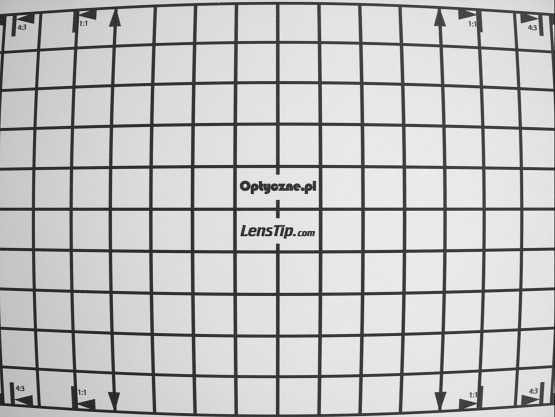Olympus M.Zuiko Digital 17 mm f/2.8
6. Distortion
Please Support UsIf you enjoy our reviews and articles, and you want us to continue our work please, support our website by donating through PayPal. The funds are going to be used for paying our editorial team, renting servers, and equipping our testing studio; only that way we will be able to continue providing you interesting content for free. |
- - - - - - - - - - - - - - - - - - - - - - - - - - - - - - - - - - - - - - - - - - - - - - - -
Fixed focal length lenses giving an angle of view around 65 degrees have showed distortion, in our tests, at the level of -1.5%. This was the case with 35 mm class Sony, Canon or Nikon lenses tested on full frame. This was also the case of tested on a small APS-C sensor Sigma 1.8/24. Unfortunately we don't have good news for 4/3 system users. Using such a small sensor requires small focal lengths if you want a wide angle of view. And small focal lengths often cause large distortion. In the case of M. Zuiko 17 mm f/2.8 it’s particularly onerous, as it reaches as much as -5.45%, which is a dishonorable record for this class of appliance.
Another thing is worth mentioning here. E-P1 users may not even notice this aberration, as it’s automatically removed from JPEG files. You can see it only after developing RAW files. What’s more, E-P1 removes it somewhat on the run, showing image already free of distortions on the LCD. In a lens test, however, it’s not our job to show what a camera or a computer can do to a picture, but how the optics works. And the optics of M. Zuiko 17 mm is burdened with very large distortion and the lens deserves criticism for that.
 |






